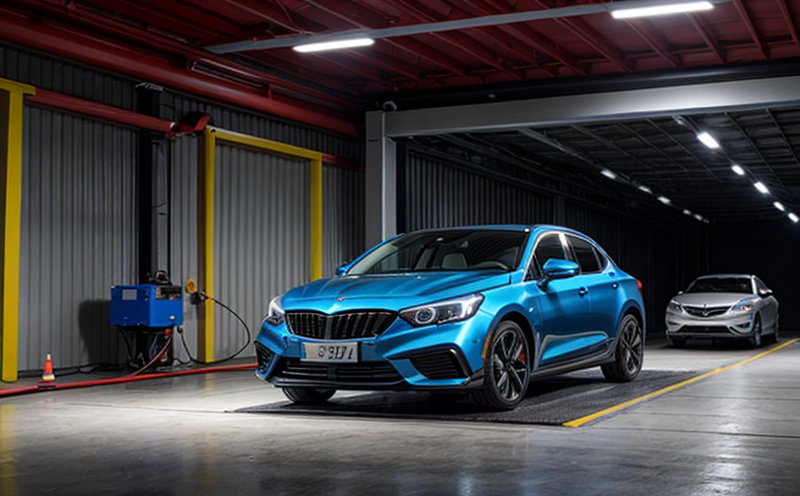Hybrid Vehicle Powertrain NVH Testing
The advent of hybrid vehicles has brought about significant challenges and opportunities in automotive engineering. Noise, Vibration, and Harshness (NVH) testing is crucial for ensuring that these advanced systems perform reliably under a wide range of operating conditions. Hybrid vehicle powertrains are complex assemblies combining both internal combustion engines and electric motors. The NVH characteristics of such systems can significantly impact the driving experience and overall quality of the vehicle.
Our service specializes in providing comprehensive NVH testing for hybrid vehicle powertrains, ensuring that these components meet stringent performance criteria. This includes evaluating noise levels generated by various subsystems, vibration patterns, and harshness factors during operation. The goal is to identify potential sources of discomfort or dissatisfaction early in the development process, allowing manufacturers to refine designs before full-scale production.
During testing, we utilize state-of-the-art equipment capable of simulating real-world driving scenarios. This allows us to assess how different operating conditions affect NVH performance. For example, tests can be conducted at various speeds and loads to understand the behavior of the powertrain under typical urban or highway driving conditions.
The importance of this service cannot be overstated given current trends towards greener technologies. As more countries implement stricter emissions regulations, there is increased pressure on manufacturers to develop quieter yet efficient hybrid vehicles. By addressing NVH issues early in development cycles, companies can maintain their competitive edge while complying with regulatory requirements.
Our team of experienced professionals uses international standards such as ISO 16732:2018 and SAE J354 for our testing protocols. These guidelines ensure consistency across different labs worldwide, making sure that results are accurate and reliable.
| Applied Standards | |
|---|---|
| - ISO 16732:2018 Automotive Engineering - Noise and Vibration - Measurement of Noise Generated by Motor Vehicles and Their Components | - SAE J354 Recommended Practice for NVH Testing on Hybrid Electric Vehicle Powertrain Systems |
By adhering to these standards, we provide clients with confidence that their products will meet global market demands. We also offer detailed reports outlining all aspects of the testing process, including raw data and analysis results.
Why It Matters
The quality of a vehicle's NVH characteristics is directly linked to customer satisfaction. In hybrid vehicles, where both internal combustion engines and electric motors are working together, it becomes even more critical to ensure smooth operation without excessive noise or vibration. Poor NVH performance can lead to reduced comfort for occupants, increased fuel consumption due to inefficient engine management systems, and higher maintenance costs.
From a regulatory perspective, meeting international standards is essential for market access in many countries. Non-compliance with these regulations could result in product recalls, financial penalties, or even legal action against the manufacturer. By investing in thorough NVH testing during early stages of development, companies can avoid such pitfalls and ensure compliance.
Moreover, addressing NVH issues early helps reduce costs associated with redesigning parts later in the production cycle. It is far more economical to identify and correct problems upfront than it is to address them after products have already been released to market.
International Acceptance and Recognition
- ISO 16732:2018 - This international standard provides guidelines for measuring noise generated by motor vehicles and their components, which is particularly relevant for hybrid vehicle powertrains.
- SAE J354 - Recommended practice specifically targeting NVH testing on hybrid electric vehicle powertrain systems. It covers various aspects including test procedures, measurement techniques, and data interpretation methods.
The acceptance of these standards extends beyond national borders; they are widely recognized by global automotive manufacturers, regulators, and industry associations alike. Compliance with these standards ensures that the results obtained from our laboratory are valid, credible, and universally accepted.





